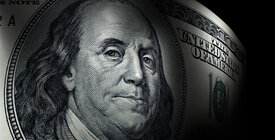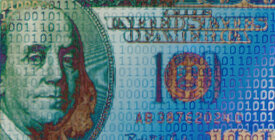Is dark money — spending by groups that hide their donors — a problem in our elections? Some have argued that the concern is overblown, pointing to Federal Election Commission data that appears to show spending on campaign ads by dark money groups has decreased since it peaked in 2012. The truth, however, is that many of these groups have simply redirected their spending to avenues not captured in that data. They increasingly funnel money to super PACs rather than running ads of their own. And the ads they do run are often timed to avoid triggering disclosure requirements. As a result, not only are the donors’ identities hidden, we don’t even know how much they are spending. This analysis presents a case study for this new dynamic: the growing reliance of congressional “shadow parties” on dark money that is spent in the most competitive races.
For the past decade, both major political parties have had shadow party super PACs through which they can raise unlimited amounts. Under the logic of Citizens United, super PACs are supposed to operate independently of candidates and parties, but “independence” is defined by weak rules that are almost never enforced. As a result, these groups, while nominally separate, are in practice blessed by party leaders, run by longtime party operatives, and effectively part of each party’s campaign apparatus. Shadow party groups frequently outraise their party’s official committees by tens of millions of dollars, relying mostly on donations that would be illegal for the party to take.
In theory, the sources of this funding must be disclosed. But over the last several election cycles, shadow parties have relied more and more on money from secret donors funneled through affiliated dark money groups run by the same people. Today, each super PAC tied to party leadership in the House and Senate has a designated dark money sister group that allows it to solicit funding from donors who want to stay hidden.
Dark money funneled through shadow party super PACs has risen dramatically over the years. In the 2024 cycle, the four dark money groups together have given a record-breaking $182 million to their sister super PACs through the end of September of the election year. That’s more than twice the amount they had given by this point in 2020. (These super PACs also receive dark money from other sources. Here we have tracked only funding from each group’s dark money affiliate.)
We can track this growth in giving because it flows through super PACs. But dark money groups, including those connected to shadow parties, also spend directly on ads intended to influence elections that slip past federal disclosure requirements. Those rules only cover certain television and radio ads that contain express electoral language or mention a candidate in the immediate run up to an election. Dark money groups can buy ads that don’t qualify (including ads prior to the pre-election period and most online ads) to avoid reporting to the Federal Election Commission.
Sometimes shadow parties announce this spending through the press. The two pro-Republican congressional dark money groups have claimed more than $105 million this election cycle: more than $20 million from American Action Network and $85 million from One Nation. Their pro-Democratic counterparts are reportedly far behind, with only $17 million from House Majority Forward. These amounts come on top of their super PAC contributions. However, the numbers are not verifiable: groups could change their plans, spend without publicizing it, or even make false claims.
Importantly, as has long been the case for outside spending in general (including dark money spending), shadow parties concentrate their spending on a few races they consider competitive, as they and their donors try to gain partisan control of each chamber of Congress. For example, the Senate Leadership Fund has concentrated all its $140 million in independent expenditures on just five Senate races, and almost all of One Nation’s reported $85 million in ad buys targets the same contests. This means that the voters in the states and districts that are most inundated with ads may have the least information about who is paying for those messages.
Legal loopholes will continue to allow megadonors, corporations and others to hide their giving until Congress closes them. The DISCLOSE and Honest Ads Acts, both part of a reform package that passed the House but was blocked in the Senate in the last Congress, would eliminate many current disclosure loopholes. These bills are likely to feature prominently in the ongoing push to overhaul campaign finance in the next Congress.




